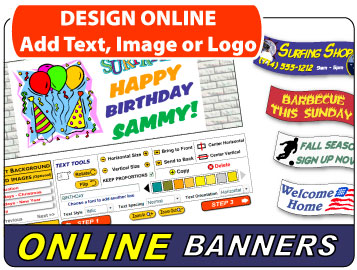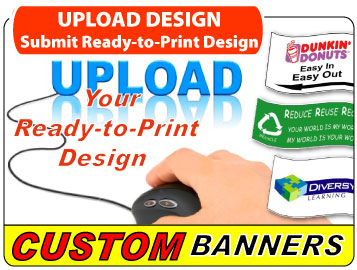| Hi-Quality Digitally Printed & Shipped in 1 Day | Indoor/Outdoor Use up to 3 Years | ||
| Premium 13 ounce Vinyl Banner Material | Waterproof & UV Protected | ||
| Options Available: Hemming, Grommets, Pole Pockets, Wind Slits | |||
Custom White Banners | Vinyl Banner Printing
Need a Banner with a White Background? Order Now . . .
White banners hold a unique place in the world of design and marketing. Their simplicity and elegance make them a versatile choice for various applications. The color white is often associated with purity, cleanliness, and neutrality, making it an ideal backdrop for conveying clear and impactful messages. This article dives into the psychological and emotional impact of the color white, its features, applications, and design tips for creating effective banners.
Color Psychology and Impact
 Meaning and Symbolism of the Color White
Meaning and Symbolism of the Color White
The color white is universally recognized as a symbol of purity, innocence, and simplicity. It is often associated with new beginnings, peace, and clarity. In many cultures, white is used in ceremonies and rituals to signify purity and cleanliness. The neutrality of white allows it to be a blank canvas, making it a powerful tool in design and communication.
Influence on Viewer Perception and Behavior
White can have a calming and soothing effect on viewers. It creates a sense of space and openness, which can make environments feel larger and more inviting. In marketing and design, white is often used to convey a sense of sophistication and elegance. It can also highlight other colors and elements, making them stand out more prominently. The use of white can influence behavior by promoting feelings of trust and reliability.
Features, Applications, and Uses
Unique Features of White
White banners are characterized by their clean and minimalist appearance. They provide a neutral background that can enhance the visibility of text, images, and other design elements. The simplicity of white allows for greater flexibility in design, making them suitable for a wide range of applications. Additionally, white is highly versatile and can be easily customized to fit different themes and purposes.
Common Applications for White
- Events: White is often used in weddings, corporate events, and other formal gatherings to create a sophisticated and elegant atmosphere.
- Promotions: Businesses use white for sales promotions, product launches, and special offers to attract attention and convey a sense of professionalism.
- Storefronts: White in storefronts can create a clean and inviting look, drawing customers into the store.
- Trade Shows: At trade shows, white can help exhibitors stand out by providing a clear and uncluttered display space.
Examples of Effective Use Cases for White Banners
One effective use case for a white banner is in wedding decorations. The purity and elegance of white complement the celebratory nature of weddings, creating a beautiful and memorable setting. Another example is in retail promotions, where white can highlight special offers and new products, making them more noticeable to customers. In corporate events, white can be used to display company logos and messages, reinforcing brand identity and professionalism.
Design Tips for White Banners
Tips on Designing Effective White Banners
When designing white banners, it is important to consider the balance between simplicity and impact:
- Use high-contrast text and images to ensure readability and visibility.
- Incorporate negative space to create a clean and uncluttered look.
- Choose fonts that are bold and easy to read from a distance.
- Include a clear call-to-action to guide viewers on what to do next.
Complementary Colors, Fonts, and Graphics
To enhance the effectiveness of white banners, consider using complementary colors that stand out against the white background. Bold colors like black, red, and blue can create a striking contrast. Soft pastels can add a touch of elegance and sophistication. When it comes to fonts, sans-serif fonts are often preferred for their clean and modern look. Graphics should be simple and relevant to the message being conveyed, ensuring they do not overwhelm the overall design.





